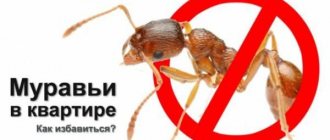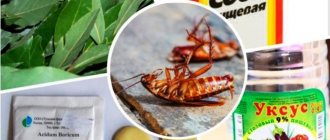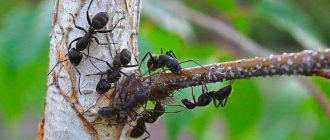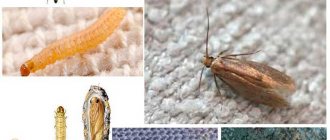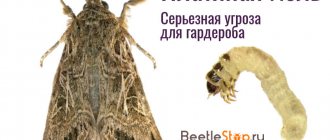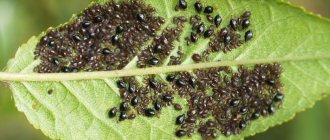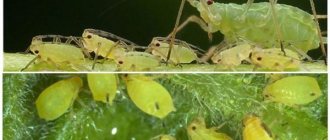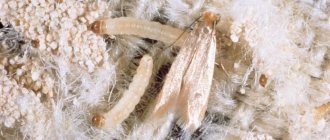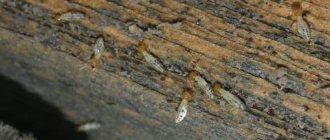Traditional methods
The undoubted advantage of old grandmother's methods is that they are harmless to the health of people and pets. You can almost always find something in the household that repels the pest and prevents it from multiplying in the apartment. Even if the required ingredient is not available, purchasing it will not cause significant damage to the family budget.
Many people have heard about orange peels, laundry soap, all kinds of essential oils and vinegar. These and other means have been tested by time.
An interesting detail: the moth was able to adapt to the action of naphthalene and practically does not react to its smell. Folk (traditional) methods and means have not lost their effectiveness.
There are two types of moths living in our apartments. You need to select herbs based on where they will be used - in the kitchen or in the wardrobe.
All plants that have a pungent odor can be divided into two groups. Some can be adjacent to food, while others cannot.
Many herbs have both medicinal properties and the ability to repel insects. They can be safely used to combat moths that have settled in the kitchen. Plants cope with this task no worse than chemical industry products.
Precautionary measures
Finding a hole in a mink coat or spoiled grain is an unpleasant surprise for any housewife. To prevent the appearance and reproduction of harmful butterflies, the necessary measures should be taken in a timely manner:
- Check flour, cereals, pasta, dried fruits, cookies, nuts that are stored in kitchen cabinets and pantries. If you find small white eggs or yellow caterpillars with a brown head, throw away the contaminated food.
- Food moths are afraid of temperature fluctuations. The food kitchen larva is hatched by heating the cereals in the oven at a temperature of +70...+80°C for 20-25 minutes. Freezing to -10°C acts more slowly - death occurs after 3 days.
- Review your wardrobe. Insects do not attach well to tissues. Therefore, you need to go through and shake all things, especially those that have not been worn for a long time. Clothes that are moth-eaten should be thrown away.
- To combat a pest in a clothing closet, you should consider the temperature at which the moth dies. In winter, clothes are taken out into the cold, in summer - into the sun. Caterpillars and pupae die in a couple of hours at -10°C, in hot sunny weather - after 5-6 hours.
- Beat out or vacuum carpets, shake blankets, bedspreads, and feather pillows and place them in the sun.
A small gray butterfly that flies around the apartment brings big problems to its residents. To prevent the appearance of moths, it is necessary to keep the room clean and regularly inspect cabinets and dressing rooms. If an insect does settle in the house, simple, proven and reliable folk remedies will come to the rescue.
Tansy
This is the most famous folk remedy for all types of moths. Its specific smell forces the pest to leave its shelter. But since the plant is poisonous, it is not recommended to use it to get rid of food moths.
The flowers are especially toxic. In large quantities they are dangerous even for cattle. In small doses, tansy is used as a medicine for many diseases. Grass grows almost everywhere. Helps get rid of not only moths, but also other household pests.
Tansy reaches its greatest effectiveness during the flowering period. Plants must be dried before being placed in the closet. It is better to do this under a canopy in the fresh air.
For ease of use, flowers are made into unique bouquets. Collect 3-4 branches and tie them tightly into a broom. Hang in dressing rooms, closets and on mezzanines.
To prevent the grass from crumbling, it is placed in gauze bags. The packaging in which shoes are sold is perfect for this purpose, so there is no need to throw it away.
It is not recommended to place too many tansy in one closet. Its smell can provoke a negative reaction from the human respiratory system. Moths, unlike humans, sense even a faint aroma and strive to leave this place as soon as possible.
Dry grass should be renewed periodically. If the moth has already bred and hatched many larvae, tansy is used as an additional remedy. Measures to get rid of the pest must be carried out comprehensively.
Efficiency
To understand whether tansy helps against moths, you should first remember that this plant is a repellent, not an insecticide. This herb, like any other repellent, is an effective preventative. With its active use, tansy protects the living space from the penetration of pests.
If there are already too many fluttering parasites and their larvae, then folk recipes alone will not get rid of them.
In this case, it is necessary to use chemical insecticides.
Artemisia grass
Moths do not like the bitter smell just like the aroma of tansy. If you smell the plant, you will feel a peculiar taste in your mouth. In large quantities, wormwood can cause reactions such as dizziness and severe headaches.
To successfully fight moths in an apartment, it is enough to place several sprigs of dried wormwood in the closet. They will not cause any harm to health, but will drive away insects.
Under the influence of the aroma of grass, butterflies lose orientation in space and cannot lay eggs. Wormwood is used as a preventative and control measure. It is better not to use it in the kitchen against food moths.
Wormwood essential oil has the greatest effect. It drives moths out of the closet. Its vapors kill bacteria that are harmful to health.
It is useful to keep pads soaked in wormwood oil in a drawer or bag with socks. This will protect them from moths and help eliminate the problem of unpleasant foot odor.
Citrus peels
Orange or lemon peels are a traditional folk remedy against moths. Their strong smell is not to the liking of adults. Therefore, in every section of the cabinet where orange peels are laid out, butterflies will not dare to lay eggs. Tangerine peels have a similar effect.
Citrus peels
To obtain the desired effect, the peel of a tangerine or orange must be fresh; it is important to prevent it from drying out or developing mold. Since dry citrus peels do not have a strong aroma, they will not protect against pests. Therefore, they need to be changed regularly.
Important! You can use tangerine or orange peels only for preventive purposes, since they are not capable of getting rid of moth larvae that have already settled in a fur coat.
Lavender
The subtle smell found in the aromas of many cosmetics and perfumes is very unpleasant to moths. This feature of the plant is used in the development and manufacture of industrial products. Buy lavender-based essential oil at the pharmacy, soak napkins in it and place it on the shelves with your laundry.
In a closet with outerwear, “lavender” scraps are tied in a knot on a crossbar or placed in the pockets of fur coats and sheepskin coats. The good thing about this method is that the clothes removed from the wardrobe do not emit a chemical aroma, but smell quite pleasant.
Applications of lavender flowers:
- Dry plants are laid out in the depths of the shelves (3-4 branches are enough for each).
- As the aroma wears off, the flowers change.
- The supply should be kept in a tightly closed container. It is better if it is glassware.
When sending warm blankets for summer storage, dry them in the sun and put them in bags with lavender sprigs. In sealed packaging, the aroma lasts much longer than on cabinet shelves, so dried flowers do not need to be changed.
Plants
The three most famous folk variants are:
- Lavender. Both flowers and oil are used. The flowers are placed in porous bags, the oil is poured into an open container, and the whole thing is placed in a suspicious place. The strong (but pleasant to humans) aroma of lavender repels pests, and the aroma lasts quite a long time. Please note that you should not treat the clothes themselves with liquid, as this can lead to the formation of stains that are difficult to remove (provided that various fats are added to the preparation).
- Geranium. You can simply grow this plant in a pot. The fragrance of geranium is not digested by many insects. However, the range of such a tool is limited. For a large apartment you will need several bushes, and cabinets will need to be constantly opened to allow the aroma to penetrate them.
- Tobacco. Both fragrant tobacco (in the form of a plant) and regular smoking tobacco (in the form of dried leaves) are used. Fragrant tobacco is similar in method of application to geranium. Smoking tobacco is used in porous bags. Please note that it should not be used to protect clothing. It will, of course, repel moths, but your mink coat will get a persistent smell of tobacco, which you obviously don’t want. The spread of such an aroma throughout the apartment is also not a positive factor.
Bags of dried leaves and flowers can be placed in clothing pockets.
In addition to the listed plants, the following are used: wormwood, thyme, tansy, horse chestnut, mint, cloves and much more.
Mint
This herb is versatile. It is used not only in the wardrobe, but also in the kitchen. The smell is pleasant, it has a beneficial effect on the human nervous system and calms. For moths, the scent of mint is a signal to leave the apartment.
If you have a summer cottage, you can grow mint there. In the pharmacy it is sold already in dried form, although recently picked plants work better.
Mint grows well in indoor pots. You just need to get hold of rhizomes for planting. You can not only forget about moths, but also drink aromatic tea with fresh leaves.
If the butterfly has already laid eggs, then mint alone is unlikely to help. To combat larvae, you need to add tansy or wormwood to the bouquet.
It is useless to fight against food moths by laying out grass on shelves. First you need to get rid of contaminated products, clean the cabinets and only then place mint sprigs next to the cereals.
Since the larvae left the house along with the garbage, the eggs were washed off with a rag, all that remains is to get rid of the butterflies. The mint flavor will cope with this very quickly. In just a few days you will not see a single moth flying around the kitchen.
Getting Close to the Enemy
Today there are more than 3,000 species of pests. They are found everywhere. Insects feed on down, feathers, mushrooms and grains, wool and fur. Some representatives settle near bird nests or rodent burrows. Housewives and summer residents most often encounter the following types:
- Cereal.
- Barn.
- Clothes.
- Fur coat.
- Furniture.
Many people know the name of an anti-moth plant that is used to create a buffer zone or repel insects. Repellent herbs are used to repel pests with a rich aroma. The insect has legs and antennae on which sensilla are present. Sensillae allow moths to capture aromas that are in the air. Since the olfactory organs of insects are highly sensitive, they pick up odors better.
Only male representatives move around the apartment or country house. Females choose secluded places for later laying eggs. The adult pest does not feed on food or things. The integrity of fur products or furniture upholstery is damaged by the larvae. They are distinguished by a developed oral apparatus and strong jaws, through which they bite off fibers or penetrate inside plastic packaging.
Other herbs
All folk (natural) remedies for moths are based on the use of odors that this insect is afraid of.
Can be used:
- sweet clover;
- chestnuts (leaves and fruits);
- yarrow;
- sage.
Some housewives make bouquets of them.
For this:
- Take a tansy branch and put wormwood on it.
- Then sweet clover, and even lower - sage.
- The bouquet is tied with an elastic band and the excess is cut off.
- Already in this form, the broom can be hung in the closet. There it will dry.
Dense wreaths are woven from fresh flowers and grass that protects against moths and dried in this form.
Description and types of pest
Moths are divided into two main groups, within which separate varieties are distinguished.
- Food moth. A butterfly from the moth family. The wingspan reaches 15 mm. Has a brown or gray color. The caterpillar prefers cereals, fruits, nuts and other grocery products.
- Clothes moth. The butterfly is yellowish in color with wings that have a lilac tint. The larvae live on dirty clothes, gnawing things to holes.
The main damage is caused by larvae that eat clothing and food. Adults have a short life cycle. Their main function is reproduction. They do not have a mouth, claws or intestines to destroy and digest what they eat.
Before getting rid of moths using folk remedies, do a thorough cleaning of the room. Open wardrobes, reconsider clothes. Throw away items gnawed by the larvae and wash whole ones. Also throw away spoiled cereals, fruits, and vegetables. Cook the remaining products in the oven or put them in the freezer for at least a day.
Newspapers
Moths cannot stand the smell of printing ink. Our grandmothers covered the shelves of cupboards and wardrobes with newspapers. To protect your favorite fur coat from damage, you can remember the old folk method and put several crumpled newspapers in a case with outerwear.
To achieve the greatest effect, the press must be fresh. When storing winter boots in your closet, stuff your boots and boots tightly with crumpled up newspaper. In this way, two problems are solved: the shoes retain their shape, and moths will never appear in them.
Ledum
This plant with soft white flowers can be found in forests and fields. It blooms almost the entire season. Ledum is often used in the fight against domestic insects, including moths. The main thing is not to overdo it - the strong aroma of this shrub can cause dizziness and nausea. To create bouquets, 2-3 branches are enough - moths will hear the smell, but for humans it will remain invisible.
Rose rosemary is an excellent moth repellent, however, you should be careful, as the plant is poisonous
Advice! Ledum is a poisonous plant, so you must be careful when collecting it yourself.
What does a moth like?
Let's deal with the preferences of house moths.
- Clothes moths love dirt. If there are traces of sweat on your clothes, for example, it will go there first.
- She feels great in conditions of high humidity. If the closet is damp and cool, expect her to visit.
- Clothes moths feed on natural fabrics (wool, silk, cashmere, cotton, etc.) and furs. Therefore, pest larvae gnaw not only clothes, but also any objects made from the mentioned materials: carpets, blankets, upholstery, fabric spines of books, stuffed birds (she also loves feathers), etc.
Rosemary
It is a well-known culinary herb with anti-moth properties. The principle of using rosemary is the same - its branches are laid out on shelves or filled with thin fabric bags. The plant is often grown in flowerpots, which is also very useful. If desired, you can take rosemary essential oil.
Advice! The scent of rosemary is not particularly persistent, so this product requires frequent updating.
Thyme
It is truly impossible not to notice this fragrant grass in fields or meadows! It has such a persistent smell that your hands will smell all day long after touching the shoots. At the same time, the aroma is not intrusive and pleasant.
Thyme has a very beneficial effect on humans - it has a tonic and invigorating effect, improves blood circulation and metabolism, and helps to quickly restore the body after illness. But it has a negative effect on moth butterflies. To quickly remove all insects, place bouquets of thyme in your apartment and closets.
